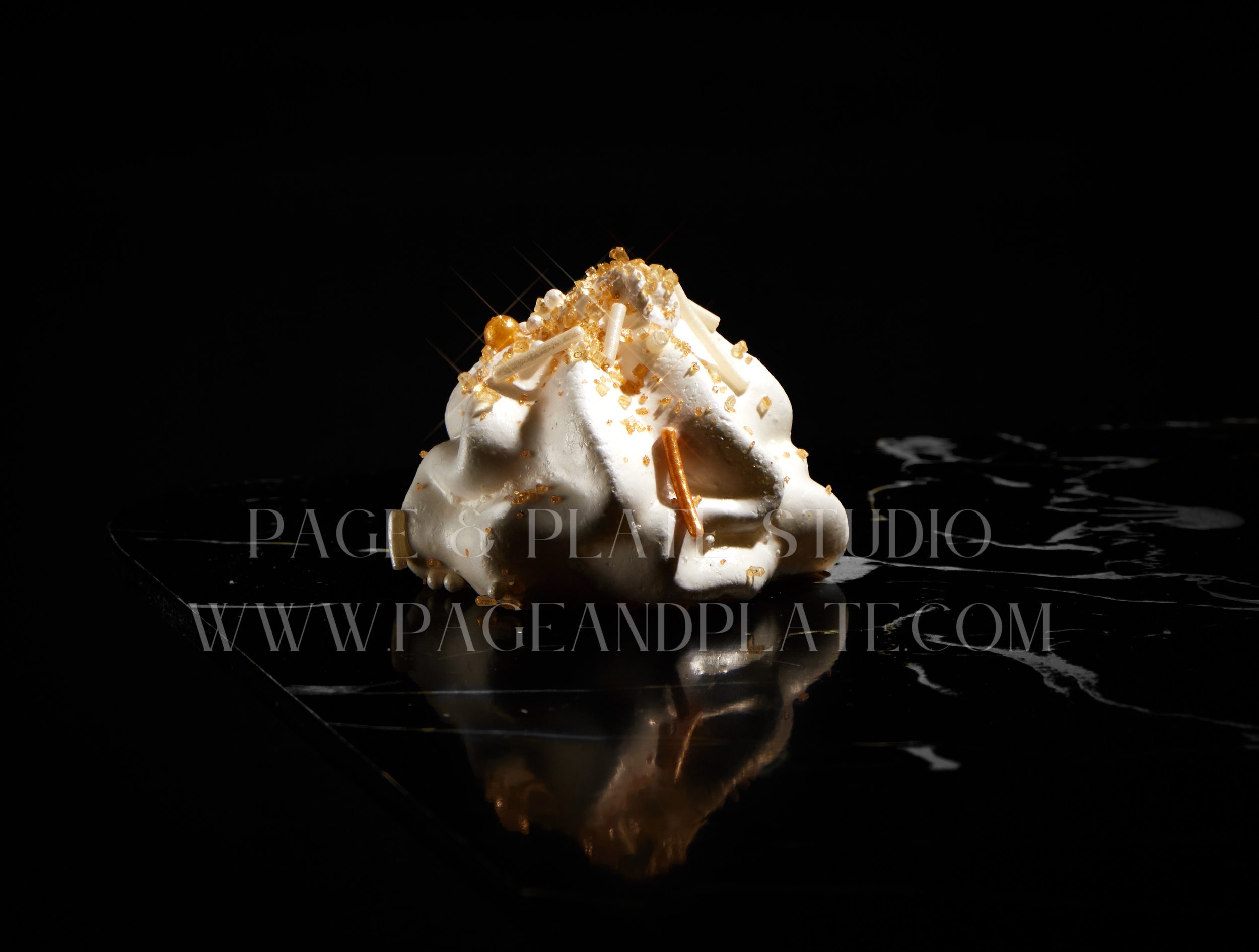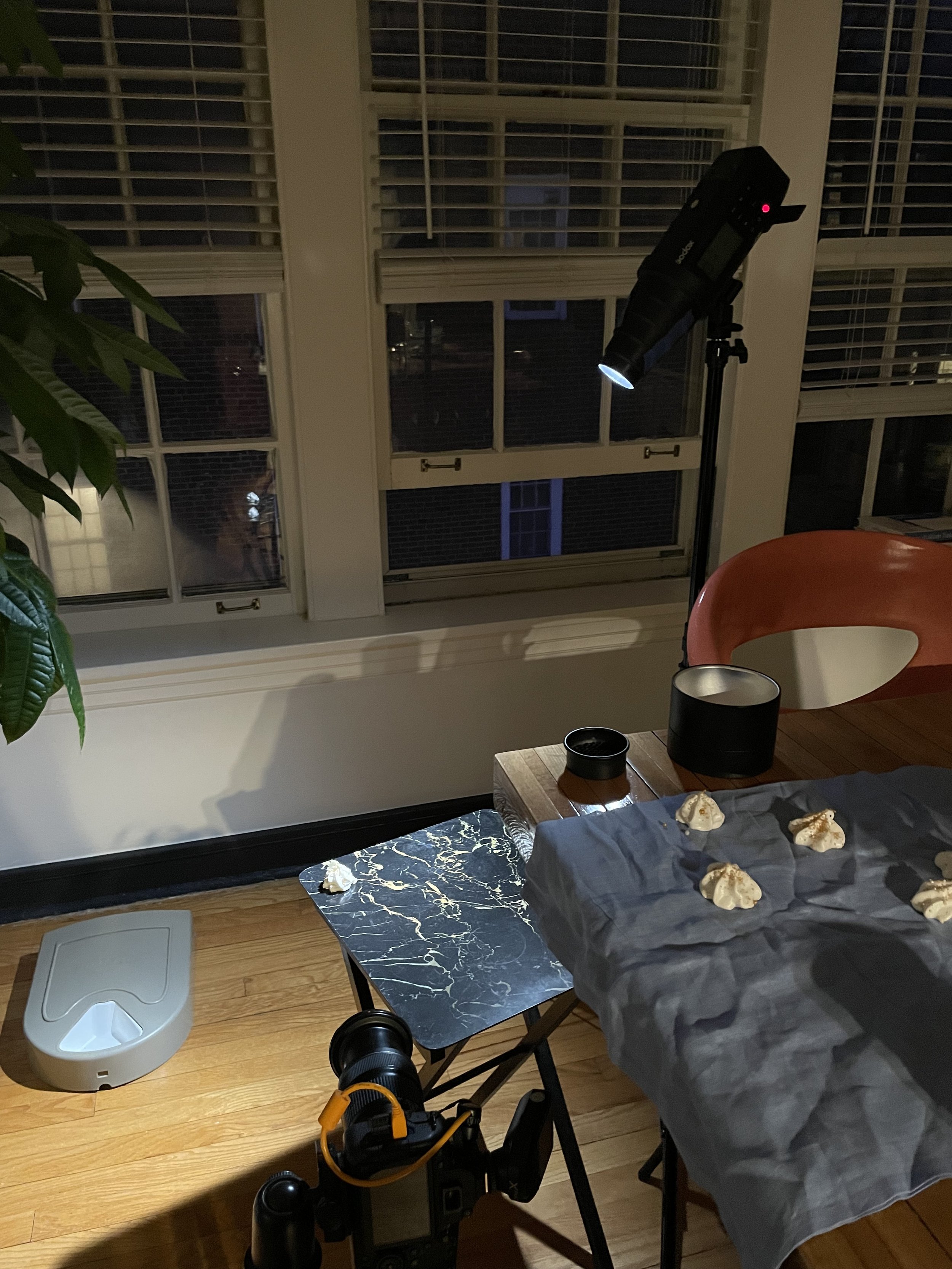Behind the Scenes: Dramatic Food Photography
This week, I’m sharing a peek behind the scenes into a recent holiday shoot I did for my personal portfolio. In 2024, I’m planning on sharing more of this behind the scenes content, so I hope you find this helpful!
Meringue Kisses Food Photography
Shooting Food Photography at Home
As most of you know, I run my studio out of my home—everything you see on my portfolio is made, styled, and photographed right here in my condo. I’ve maintained studio spaces in the past, and I hope to again in the future, but right now, this is what works best for me. I’m planning a longer post for late January, but my biggest piece of advice for photographers working from home is to keep things organized at all times. That way, when creativity strikes or you made a cake that’s just too pretty not to shoot, everything is at your finger tips!
What equipment was used for this food photograph?
For this shoot, I kept it simple and grabbed my strobe light, camera, tether cord, and trigger. I knew that I wanted to highlight the texture of the meringue and really make it the star of the photograph, so I opted not to use any other props for this photo. I ended up using a snoot as well—more on that below!
How can I use light as a prop in food photography?
I love light. I’m crazy about it—I study it all the time, both in my studio and out in the world. One of my favorite and unexpected ways to incorporate light into photographs of food is as a prop. For this photo, I wanted to use it to literally highlight the meringue and draw attention to it in the same way putting it on a pedestal would.
I positioned my strobe directly to the right of the subject and raised it to about 5 1/2 feet high. I pointed the light directly at the meringue, and then decided to shape the light using a snoot like the one shown below. This modifier narrows and concentrates the beam of light that comes out of the strobe, which really helped to differentiate the meringue and the background of the photo (which was just the studio floor).
Snoot Modifier for Strobe Light
Drawing Inspiration
In thinking about the photo that I was producing, I knew that I wanted to make a dramatic representation of this cookie. One of my favorite baking books of all time is Jesse Szewczyk’s Cookies: The New Classics. I love the way the photographer, Chelsea Kyle, made cookies shine in really unexpected ways, and I wanted to bring that intention to this food photograph. Of course, anytime you’re searching for inspiration, it’s important to both credit your sources and make sure you’re being inspired by the original work—not copying it.
Post-Production for Food Photography
I use Capture One for my studio photography, and I love it. I made the switch from Lightroom last year, and I really felt like it upped my game. For this image, I did some minimal edits in Capture One and then pulled the photograph into Photoshop to add some small sparkles onto the sprinkles using a star filter.
The Final Shot & Set-Up
Unedited (Straight from Camera)
Edited (Capture One and Photoshop)
The final shot is full of drama—just what I was aiming for! I’m sharing both the edited and non-edited version above so you can get an idea of the impact that setting the light up in the right place has on the subject. I’m also sharing a photo of my set-up below so you can see exactly where everything was to get this result.
ISO 160, 1/13s, f/20, 108mm
How are you planning on using light as a prop to enhance your food photography in 2024? Let me know in the comments below!



